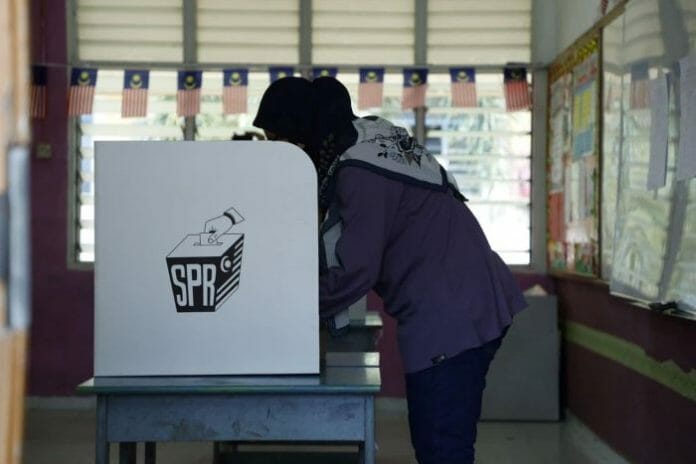Kenanga gave a summary on the market performance for the 1H of the year and believes there are avenues to look out for in the second half of the year that could spell a better circumstance for the KLSE.
The house believes the local market has bottomed out, it is more likely to decisively break out from the doldrums under two
conditions, namely: (i) a dovish pivot by the Fed, and (ii) a market-friendly outcome of the six impending state elections.
On the other hand, it is also more inclined to see the market’s decades-low foreign shareholding as insurance against
the downside risk to the market, in the event of a significant pullback of the global market.
A Dovish Pivot by the Fed
The global market has rallied thus far this year driven by expectations of an end to the rate hike cycle in the US (and to a
certain extent, the AI frenzy). However, our local bourse has very much sat this out. We believe the significant YTD
underperformance of the local market itself already warrants a catch-up play. Alternatively, upon a dovish pivot by the
Fed (which the Fed is still extremely careful in not saying anything to that effect), the global market is likely to go another
leg up, which may eventually inspire a more sustainable uptrend in the local stock market.
US inflation has more than halved from its peak, as reflected in the CPI YoY change easing from 9.1% YoY in Jun 2022
to 4.0% in May 2023 (see Exhibit 9). However, the Fed has strong reasons to maintain a hawkish bias given the
persistent strength in the labour market, and hence consumer demand, making it unrealistic to expect inflation to
imminently ease to 2% (as per the Fed’s definition of “price stability”) from the current level.
This goes to explain while the Fed maintained the target range of its funds rate at 5.00%-5.25% during the Federal Open
Market Committee (FOMC) meeting in Jun 2023 (as it had guided), its latest dot plot points to a higher terminal rate
forecast of 5.6% (from 5.1% three months ago) which implies two more 25bps hikes before the year is out.
However, the market thinks otherwise, as reflected in the Fed Funds futures pointing to the target range of the Fed
Funds rate to peak at only 5.25%-5.50% in Jul 2023 (see Exhibit 10), i.e. only one more 25bps hike in 2023.
A Market-Friendly Outcome of the Six State Elections
Kenanga defines a “market-friendly” outcome of the six state elections, expected to be held in Aug 2023, as one that will not
unsettle the political stability at present, or more specifically, erode the confidence of the unity government’s partners in the
leadership of Prime Minister Dato’ Seri Anwar Ibrahim.
Assuming a market-friendly outcome of the state elections, the unity government will then be able to expedite its policy
reform agenda in favour of a more progressive, pro-consumer, pro-competition, and free-market approach. A well thought-out subsidy rationalisation plan could spark a re-rating of the local market as it would lead to a significant
improvement in the government’s fiscal position. According to Deputy Minister of Finance I Datuk Seri Ahmad Maslan,
the prevailing subsidies on petrol, diesel, liquefied petroleum gas, electricity, cooking oil, chicken, eggs and other
consumer goods will add up to a total subsidy bill of RM66.3b in 2023. Similarly, the reintroduction of some form of
consumption tax (presumably at a rate that is not too burdensome to consumers) could also be well received by the
market as it would broaden the tax base, ensuring the long-term fiscal sustainability of the nation.
Already, the government in late-June 2023 had announced a 10 sen/kWh surcharge on heavy domestic users, i.e. those
who consume >1,500 kWh monthly (equivalent to a monthly bill of RM708), effective 1 Jul 2023.
Low Foreign Shareholding an Insurance to the Downside Risk
However, Kenanga said it does not subscribe to the idea that the market’s foreign shareholding, which is at decades’ lows , is poised for a “technical rebound” by virtue of it being “oversold”. It is more inclined to see it as an insurance against
the market’s downside risk, in the event of a significant pullback of the global market (i.e. as foreign investors have very
limited holdings left to be unloaded into the market).









